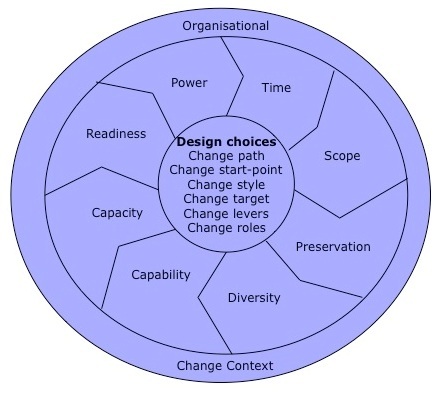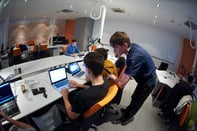Published on
Give Me The Tools For Change – Part 1

Change as the word suggests is dynamic, chaotic, poorly communicated and more often than not results in disastrous consequences. There are so many examples across so many industries of poorly managed change programs. You would have thought that by now we would have developed the necessary competencies to effectively manage change, sadly not.
There are so many tools you can use when considering organizational change., traditional tools like SWOT, Porters Force Field analysis and many others, all of which have there places, but few provide a complete understanding of the change environment, which is why so many change programs fail before they have even started.
So like every good management consultant I have found a new change analysis tool. Its better, more comprehensive than the others and it does significantly increase the potential of successfully implementing organizational change program and reduce the risks associated with any change management project.
Hopefully by now you’re ready to employ me as your next change analyst?
But seriously, the more complex the organization, its stake holders and the operating environment the more sophisticated the analysis tools needs to be, well that’s a management consultants take on things especially when selling their change management services.
An educational establishment is one of the most complex organizations that I am aware of, with numerous stakeholders all with differing needs and expectations. So if you are a Higher Educational Institution, what tools would or should you use to establish your change capability and capacity?
The tool that appeals to me the most is the change kaleidoscope. The change kaleidoscope appeals to me for a number of reasons, the first being it reminds me how as a child I looked through a kaleidoscope and marveled at the different colors and patterns as I manipulated the toy.
Like the child’s kaleidoscope, the change kaleidoscope allows you to view your environment from different perspectives, but contextualized by the organization, its surroundings and its people to mention but a few perspectives.
In my article Niche Versus Diversification I looked at niche markets and diversification and if Universities and Colleges’ should consider the possibilities of diversification or specializing and going for new niche markets and what the impact would be on teaching, learning and research capabilities. The conclusion I came to was that if you had the capital, capability and courage then you would significantly increase the likelihood of successfully diversifying.
Of course this is a very simplistic view, designed to provoke a response However, if you now apply the change kaleidoscope to the issue of diversification you can then see how 3 of the 4 elements fit together (Capital, Capability and Commitment) and how, when contextualized the change model starts to provide the necessary understanding to effectively implement change and maintain the momentum necessary for change to metamorphosis’ into sustainable development and continuous improvement.
Author Perspective: Business


